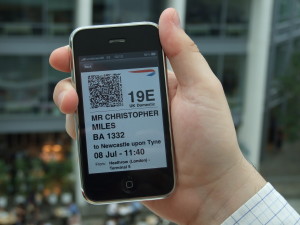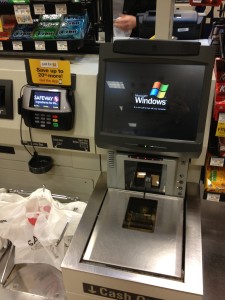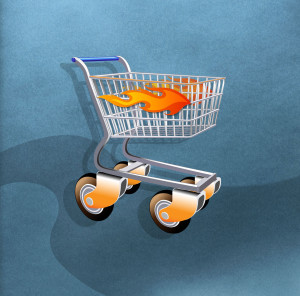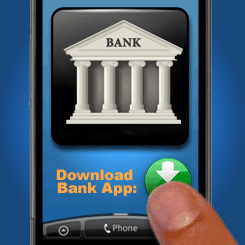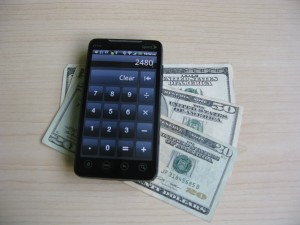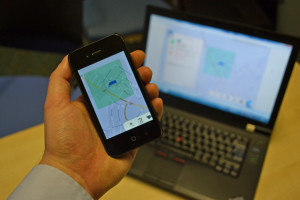Category: Electronic Payments
September 30th, 2013 by Elma Jane
National Transaction Corporation and Trams Back Office
As National Transaction Corporation Executives get to meet Sabre’s key people in Miami FL let’s know more about what Trams Back Office one of their respective products can offer.
Travel and transportation industry is evolving quickly, agility is needed in adapting to the changing customer needs. In addition to providing the right services for customers and for business.
With Trams Back Office, part of the Sabre Red travel solution, your capable to easily monitor, manage and grow your business. Trams provides right-size, right-price information technology (IT) solutions and is one of the most popular back office accounting and reporting system on the market today. It’s easy to learn and use, helping you control costs with extreme efficiency.
In addition, Trams Back Office seamlessly works withClientBase to deliver a complete solution incorporating GDS integration, CRM, General Ledger, and more.
Special Features
Credit Card Merchant – process your merchant credit card service fees and other transactions through Trams Back Office.Trams and ClientBase Products and Services has formed alliances with credit card processing companies, to bring you competitive rates and an easy-to-use interface to process agency merchant credit card service fees and other transactions through Trams Back Office.
The Credit Card (CC) Merchant Reconciliation under Payments|Reconciliation|CC Merchant Reconciliation takes the CC Merchant payments from Trams Back Office (TBO) verifies them, and sends them electronically to your credit card processor. Your credit card transactions are then processed and sent back to Trams Back Office, where TBO clears the processed items and creates the payment and the journal entry to record the activity in the General Ledger.
Add Ons
Trams Crystal Reports – measure effectiveness and efficiency by running pre-designed Crystal Reports within the Trams Back Office system. Its FREE!! Trams Crystal Reports is an add-on to ClientBase and/or Trams Back Office that offers you the ability to run pre-designed Crystal Reports in addition to those offered within the Trams Back Office and ClientBase products. TCR10 is the most recent version of Trams Crystal Reports that is integrated with Trams Back Office and ClientBase. When TCR10 is installed, you will be able to launch Trams Crystal Reports from your desktop or in Trams Back Office, using the TCR Viewer under Reports.
IC/Host Agency Export Utility- allows Independent Contractors to share invoice data with their Host Agency’s Trams Back Office system for FREE!! Agencies today are choosing to change the way they make their bookings. Many are dropping out of ARC/BSP and booking air tickets through a Host Agency. They may also book some or all of their Cruise & Tour business with a Host Agency, or continue doing those bookings as they always have. These Independent Contractor (IC) Agents working through a Host Agency, may still operate a Store Front location, or move into a “home based” environment. This utility is designed for independent contractors (IC) and host agencies to share data more efficiently. IC’s use the host’s GDS create invoices marked with their own IC code. These invoices are then interfaced into the host’s Trams Back Office (TBO) database. This utility gives the Host the ability to transfer these interfaced invoices to the IC for importing into their IC copy of Trams Back Office. To receive records from a host agency using this utility, an IC must have a copy of Trams Back Office. The utility also allows IC’s that use ClientBase to create invoices, to export those invoices and share them with the host agency.
Over View – Trams Back Office is a locally installed solution that allows agency to effectively manage entire accounting and reporting process with their Free Special Features and Free AddOns.
Posted in Credit card Processing, Electronic Payments, Merchant Services Account, Travel Agency Agents Tagged with: agencies, agency, agency's, air, Back Office, clientbase, credit card merchant, credit-card, host, payment, processor, reporting, Sabre Red, solution, store front, tickets, Trams, transportation, travel
September 26th, 2013 by Elma Jane
With revamped iPhone app Travelocity rethinks smartphone bookings
To accommodate for the more gesture-based features in Apple’s new iOS 7, Travelocity rebuilt its iPhone application from the ground up. The online travel agency’s new app is aimed at moving users through the booking process quicker with more visuals. Travelocity has been streamlining all parts of the trip-planning experience with its mobile apps continuously in the past few years.
“Luckily, we have a great, agile team and some top-notch mobile designers, so we were able to dive into the new design as soon as the beta was released. “We also decided early on to rebuild this version from scratch and really work on making it fast and reliable,” said Blake Clark, director of mobile for Travelocity. “We find mobile travelers demand speed and sometimes they’re in less-than stellar connection areas, so that was a big one.”
Streamlined design
Tavelocity updated its iPhone app with a design that highly plays up images and visuals. The app’s home screen shows photos of world cities to inspire consumers to take a last-minute trip. The app also leverages the new AirDrop feature of iOS 7 to let consumers securely share their travel information with friends and family members after they book a hotel.
The new app includes a feature that lets consumers scan their credit cards with a built-in camera feature to cut down on the number of steps that it takes consumers to check out. The technology detects the number on a credit card and automatically fills in portions of the checkout page. The app also highlights Travelocity’s mobile-exclusive offers that take into account a user’s location to serve up relevant offers and deals.
Travel on mobile
Travelocity has been building up its mobile strategy for quite some time with different mobile products and ad campaigns. Most recently, the brand designed its Web site around responsive design, which led to a 6 percent increase in iOS bookings and an 8 percent jump for Android reservations after two month.
Travelocity’s tablet booking experience was also named the best this spring in a study from Mobivity.
Travelocity is the latest example of how iOS 7 has shifted the way that marketers develop mobile apps with more gesture- and touch-based features. “It’s a shift of how Apple customers interact with their devices, and as a leader in the travel space, we wanted to make sure we’re reducing the amount of friction travelers have when booking a trip.” “With the iOS 7 launch, now our app and the device look, work and feel the same; it’s seamless.” Mr. Clark said.
“Travelers can easily access the deep selection and great value Travelocity is known for. Travelocity’s goal – to be a traveler’s trusted companion before, during and after the travel experience.”
Posted in Credit card Processing, e-commerce & m-commerce, Electronic Payments, Mobile Payments, Near Field Communication, Travel Agency Agents Tagged with: agencies, agency, agency's, agent, app, booking, iOS, ios7, Iphone, mobile, smartphone, travel, travelocity
September 26th, 2013 by Elma Jane
Mobile checkout integrated into transportation ticketing app by Barclay’s Pingit
Barclay’s Pingit mobile payments service is teaming up with Corethree to bring the financial institution’s mobile checkout to public transportation customers in Britain.
Corethree offers a mobile wallet for transport ticketing in Britain. By including Barclays Pingit in its wallet, Corethree can offer users more flexibility in how they pay for tickets.
“Providing a variety of native payment solutions within the application enhances the customer experience by allowing them the same type of purchasing experience that they currently enjoy from their favorite websites and ecommerce sites.”
“In the U.S. this includes integrating with payment option like PayPal and eventually electronic wallet providers as well.”
Mobile checkout
Pingit was introduced in early 2012, enabling users to make person-to-person payments.
The app’s breadth of services have been expanded several times since to include mobile payments from NFC tags and mobile checkout for Web sites and print ads.
Corethree reports that it is the first business to integrate Barclays Pingit mobile checkout, enabling bus passengers to browse, select, purchase and use bus tickets from their mobile devices.
Over the next 12 months, Corethree and Barclays will roll out their mobile payment services to other transport operators, with the goal of reaching up to 1 million passenger journeys per day.
The service will be available via Android and iPhone devices on any mobile network.
Mobile payments entry
Public transportation organizations around the world are embracing mobile ticketing to make it easy for riders to purchase and use tickets from their smartphones. Enabling users to purchase transit tickets anywhere at any time that can be used. Last year, the Massachusetts Bay Transportation Authority rolled out a new mobile ticketing service, giving commuters a way to purchase and display rail tickets on their smartphones.
“Transit is an integral part of consumers’ daily lives, and as such providing consumers with a secure way to pay with their phone and not have to carry cash or exact change is a great starting point for people to get comfortable using mobile payments.”
“Mobile ticketing is a great way to introduce customers to making payments from their mobile device.”
Posted in Credit card Processing, Digital Wallet Privacy, e-commerce & m-commerce, Electronic Payments, Mobile Payments, Mobile Point of Sale, Travel Agency Agents Tagged with: checkout, devices, electronic wallet, integrating, Iphone, mobile, nfc, payment, payments service, smartphone, Tags, ticket, ticketing, tickets, transportation, travel
September 26th, 2013 by Elma Jane
5 Effective and Unusual Ecommerce Pricing Strategies
Most online retailers set pricing using the cost-plus or the value-based method. While these work well, there are several other ways to price products. Here are the five effective and unusual ways to price products on your ecommerce site.
1. Name your Price
This is a variation of the PWYW model, where the price has to exceed a threshold to get the product. This threshold price is not shown to shoppers to allow them to name their own price. This model has been successfully used in the travel industry, among others, where availability of airlines, hotels, and travel dates is based on the named price. This strategy can also work well for online retailers that are selling the following types of products.
Defined Price Ranges – Gifts site where NYP can be a guide to show products that are within that price range. NYP can be used as a guided selling tool to show gifts within a defined price range. The retailers can use price discrimination in combination with this strategy to increase their profits.
High Perceived Value – The perceived value of the product is much higher than the cost of procuring it, prompting the consumers to name a higher price. This can apply to books, music, and food products.
Imprecise Value – The products can be sold at a wide range of prices and still generate a profit. This could include one-of-a-kind products or art, where it is difficult to assess the value.
2. Pay What You Want
The pay-what-you-want strategy — PWYW — has been around for a while but has not been used heavily in the online retail space. A well-publicized offline success is Panera Bread restaurants, which has used this pricing strategy in a few of its restaurants. In the online world, Humble Bundle a music and game store has been using this too. In almost all cases, this strategy did not result in a significant profit or loss but led to a lot of free marketing. That is one of the big reasons for adopting this strategy in retail. There are several types of online retailers that can benefit.
Limited Categories – This strategy does not need to be implemented for your complete online store. It can be limited to a few products or a few categories that are the best fit.
Link to Charities – If your site shares revenue with charities, then PWYW can work, as customers often pay more to help the charity, increasing your share of the revenue in the process.
Offer an Incentive – You can also tie the PWYW strategy with an incentive…such as an additional product once the price exceeds a certain threshold, say $10. This threshold can be kept secret or made public on the site as a marketing tactic to encourage customers to pay more.
Proper Customers – If you believe that your customers are fair-minded and understand the value of your products, then PWYW might be effective.
3. Personalized Pricing
This is a relatively new strategy where specialized yield management algorithms are used to personalize the price offered to each visitor. With the rise of Big Data, most of the personalized pricing is done in real-time by analyzing a variety of factors like customer loyalty, device used by the shopper, customer preferences, history of purchases, and so on. This strategy is best suited for the following types of online retailers.
New Products Regularly – There are many products in the online store, with new products introduced regularly. This makes personalized pricing more effective as repeat customers see the new product and the new promotional pricing to reward their loyalty, or to encourage a first purchase for new ones.
Repeat Customers – Customers know that they will be rewarded with personalized pricing and promotions based on the loyalty to your site.
Wide Profit Margins – Products are sold with good margins, allowing the retailer to offer discounts at any time. For example if the product is sitting in a shopper’s cart for a few days, the retailer might offer a discount or drop the price to encourage the shopper to complete the purchase.
4. Flat Pricing
Flat pricing is a strategy where a limited number of prices are used for all product offerings, such as in dollar stores where every product is priced at one dollar. This strategy works well in the following situations.
Many Similar Products – Your site sells a wide variety of products that are priced nearly the same. In this scenario, flat pricing is simpler to manage, easier for consumers, and also results in greater profit.
Subscription Pricing – A new trend in online retail is subscription pricing, where customers can sign up for a flat price of, say, $25, $49, or $99 to receive a set of products every month.
5. Free
Several software companies are using free pricing successfully where the software is given away for free and customer is charged either for support or for premium features. A free pricing strategy can be an effective strategy for ecommerce merchants to attract customers by following the following guidelines.
Basic vs. Premium Versions – This strategy can be effective if the basic version is free and the customer pays for a premium version. The life insurance industry uses this approach, where a basic $10,000 insurance is often free. If even a small percentage of customers buy the premium offering, the insurer makes a profit.
Emphasize Consumables – Products that have durable and consumable components can benefit from a free pricing strategy, if customers can only buy both pieces from your site. For example, Gillette sometimes offers shaving razors for free since only Gillette shaving blades will work with its razors. On the other hand, it does not make sense to give away a laser printer for free because the printer paper and toner can be bought from anywhere.
Loss Leader – Use this strategy to offer products for free using the loss leader model. Customers come to the site to get the free products and once they are on the site, you can up-sell or cross-sell them other products.
Seasonal Products – If your site sells seasonal products, then this strategy can drive traffic. For example, a retailer could give away free U.S. flags during the July 4th holiday to generate traffic, while also pushing other non-free July 4th merchandise.
Posted in e-commerce & m-commerce, Electronic Payments, Travel Agency Agents Tagged with: Airlines, e-commerce, hotel, online store, pricing, subscription, travel industry
September 26th, 2013 by Elma Jane
Convergence of mobile banking, ATM channels is a given
Auriga, Diebold, NCR and Wincor Nixdorf International have all demonstrated their mobile phone-based cardless cash withdrawal solutions. It is interesting to note that all of these vendors have embraced the QR code technology…a clear endorsement for a technology that is secure, low-cost, and readily available.
It doesn’t take a deep examination to realize that the mobile banking and ATM channels are heading toward convergence, and when the fusion of these dominant channels occurs, the consumer should be at the heart of it.
Auriga has advanced this idea by combining cardless ATM withdrawals with its mobile payments solution. The company has also added an option to make payments using a bank account rather than a card to support those consumers who do not embrace, or do not qualify for, traditional bank cards.
Not surprisingly, many large retailers are watching these developments with keen interest, ever mindful of the significant interchange fees they pay for accepting card based payments.
Although cardless ATM withdrawals and mobile payments are exciting, they are only the start of a deeper, multi-channel convergence. The real channel convergence is not happening at the endpoint devices, it is happening internally within the banks and processors, where modern, flexible technologies are being increasingly deployed to augment or replace yesterday’s legacy infrastructure.
The abilities to centralize business services to save costs, to easily deploy services over any channel for greater consumer choice and to achieve faster times to market for new services are no longer “nice to have” luxuries — they are now “must have” attributes to stay in the game.
It is little wonder that leading banks are shifting their IT investments away from solutions that perpetuate a fragmented services approach in favor of true multichannel systems that facilitate the ultimate consumer experience.
“Channel convergence does not mean that the ATM or the mobile device is at the center, it means the consumer is at the center.”
Once the consumer is placed at the center of your self-service strategy, you quickly realize it is their needs and preferences that should rightfully guide your approach.
The real secret is to allow consumers to interact with their bank the way they want to…with as few restrictions as possible. There is no magic silver bullet that will suit every consumer’s needs.
Banks can create deeper and more enduring relationships with their customers by implementing personalization profiles that allow consumers to tailor their own service experience.
MySpend solution is an excellent illustration of how banks and consumers can better cooperate to combat fraud, consumers can define their own use rules to significantly improve the accuracy of any fraud detection system. For example, card transactions from specific countries can be readily declined if a consumer knows that he or she will not be there, it also provides consumers with an instant notification of their transactions and the means for them to immediately flag any transaction they did not perform.
The use of consumer-specific profiles can be easily extended beyond the anti-fraud focus of MySpend solution. For example, Auriga’s Internet banking solution allows consumers to choose their own login security options from the bank-approved list, including an option for phone-based authentication using QR codes. More broadly, consumer-configured use profiles can improve the entire consumer experience, regardless of the chosen service channel.
Auriga’s ATM solution includes an intelligent menu that automatically tracks the consumer’s transactions and presents the most frequently used transactions on conveniently accessed menu buttons.
“The technology already exists to allow (consumers) to customize their own ATM menu through their mobile or Internet banking channel.” “It is only a matter of time to see the widespread adoption of this advanced customer-centric convenience.”
Ultimately, the business challenges are not about technology; they are about learning how to use the technology to promote growth and identify new competitive advantages. A recent ATM Marketplace report said that “the bank of the future will be a multichannel, multifunction and multi-device environment.” Given the current evidence, it seems this is a sentiment everyone can agree with.
Posted in Electronic Payments, Mobile Payments Tagged with: banking atm, banks, card based payments, convergence, diebold, interchange fees, mobile banking, Mobile Payments, mobile phone, QR code, secure, technology
September 20th, 2013 by Elma Jane
U.S. Bank integrates to simplify mobile money transfers with Western Union
U.S. Bank has offered Western Union Money Transfer services since 2009, but now customers can do so via mobile. According to U.S. Bank, it is the first bank in the United States to integrate the Western Union Money Transfer services into its mobile app.
U.S. Bank is collaborating with Western Union to let U.S. Bank customers use the Western Union Money Transfer services via the U.S. Bank mobile application. “Adding Western Union enhances overall digital money movement strategy.”
“Primary goal is to make it easier for customers to send money on any device to anyone across the country or around the world.” Giving customers the most convenient banking experience by delivering and allowing customers to bank anywhere and anytime they want.
Money transfer
In order to qualify for the new service, customers must have been a customer of U.S. Bank for at least a year and have a registered mobile phone and eligible deposit account. Western Union Money Transfer services let consumers conveniently pay other consumers via mobile or desktop.
Eligible U.S. Bank mobile banking customers will now see the Western Union logo in the person-to-person money transfer options. Online banking customers will see Western Union as a funds transfer option.
U.S. Bank decided to offer the new service to make moving money as convenient as possible for its customers. Customers will be able to send money around the world from the comfort of their own home.
When consumers receive a payment through the Western Union services, they can be paid in cash and use it immediately.
Mobile banking
U.S. Bank has rolled out a number of mobile initiatives in the past few years.
In July, U.S. Bank integrated with the Square digital wallet, enabling users to fund payments made via the mobile application from their bank account.
Earlier this year, U.S. Bank even offered customers the ability to pay via NFC by providing a customized U.S. Bank Go Mobile iPhone case equipped with NFC technology.
The bank also rolled out mobile photo bill pay services last year to let customers pay their bills by simply snapping a picture of the document using the camera on a smartphone or tablet.
“As device ubiquity grows, as people become more comfortable using their phones for all their banking activities, a lot of new ways to leverage a phone’s capabilities to make banking easier for customers, customers expect their bank to offer a full rich set of money management and movement capabilities on their phones, tablets and laptops.”
Posted in Digital Wallet Privacy, Electronic Payments, Mobile Payments Tagged with: banking, mobile, money, nfc, payment, transfers, U.S. Bank, US Bank, western union
September 20th, 2013 by Elma Jane
“Hardware”: Key to Mobile Commerce’s future
If you thought mobile commerce was about the cloud or software, proof to the contrary is mounting. In fact, four key moves by three big companies over the past week have provided more evidence that software and the cloud are taking a back seat to a significant force in mobile.
OTA VS. Device Access
Without security mobile commerce is dead in its tracks after the first major breach. Two basic elements: Access to mobile apps and over-the -air security. Both necessary but they play entirely different roles. Mobile apps have direct access to our lives. With them we can share our professional story, personal lives and of course move money around with mobile banking and mobile commerce apps. Therefore, ensuring that no one but YOU can access your apps is important. That is why you probably have myriad user names, passwords and PINs. This brings us to our first big hardware move.
Apple’s Touch ID
Apple introduces hardwarebased biometrics with its new Touch ID. Essentially the first commercially product available biometric button, combines the user request (pushing button) and the identity check (scanning the fingerprint) into one action.
Apple correctly presented this feature as an excellent for a personal identification number to activate the phone or complete an iTunes purchase.
Apple’s Secure Enclave
The “secure element” is essentially hardware and software that, when combined, function like a smartcard running on a part of the mobile phone that no other app can access. Apple announced that the highly sensitive fingerprint data from its Touch ID product would not be stored on a remote server, in the cloud or even in the iPhone memory. It will be stored in the “secure enclave” of its new A7 processor chip.
Difference between a secure enclave and a secure element? Probably little or nothing. We don’t know if Apple’s secure enclave uses smartcard technology, we know it is essentially hardware and software running on the part of it’s a& chip that no other app can access.
Posted in Electronic Payments, Mobile Payments, Mobile Point of Sale Tagged with: Apple, commerce, mobile, secure, Security
September 17th, 2013 by Admin
Payments
“Geofencing” a program that uses the global positioning system (GPS) or radio frequency identification (RFID) to define geographical bounderies. It creates the opportunities for new business models and generations. Allowing the use of mobile tools and services to not only interact with loyal customers, but also reach potentially new customers when they come into a geographic proximity, explained by a spokesperson from a Mobile and Wireless Group. So it does open the doors to some interesting new applications.
To date, radio positioning signals have been supplied to consumers primarily by the U.S. Military through a constellation called “GPS” or Global Positioning System. Essentially, receivers on the ground…. or in cars….interpret the signals and tell you roughly where you are.
Europe’s Galileo global satellite navigation system is expected to open up a variety of business opportunities. Big changes are in the air as a result of new more accurate systems on the way. One example: geofencing, a highly targeted form of tight, perimeter-based locating.
Galileo
A form of geofencing using the U.S. GPS is already used to monitor stolen vehicles, trucks and delivery drivers, among other things. GPS isn’t particularly accurate, though. With more accuracy, geofencing could be used to create a zone around a store or school, for example…or even a particular vending machine, in the world of commercial applications.
One of the new systems offering fresh potential in this area is Europe’s upcoming Global Satellite Navigation System, or GNSS, Known as Galileo.
“Global Applications”
Where Galileo gets particular interesting for us in the e-commerce world is that, buried deep in the European Space Agency’s promotional descriptions are some telling statements. For example, Galileo will offer a commercial service that will “allow global high-end and innovative applications” with accuracy down to a few centimeters.
For comparison , GPS maker Garmin says its latest GPS receivers are accurate to within 3 to 5 meters. Second, despite being a government project, Galileo will be under civilian control…not government control the way GPS is. It will be fully open to commercial applications. Then too, there’s aunthentication feature Galileo will include…an accurately timed, trusted location factor. The Galileo Commercial Service demonstrator will begin its proof of concept in 2014, with early service reckoned to start in 2016.
Possible Sensitive Transactions
Why do we care about all this? Simple: because of Geofencing.
Geofencing is currently used in mobile e-commerce to deliver ads and promotions based on a geographical region of interest. The GPS is used to define proximity so that an advertiser can know when you’re in the area.
Now add Galileo’s authentication to this mix, plus the microlocations obtainable with Galileo, and you’re in a defferent ballpark…almost literally. Sensitive transactions become possible, along with tracking to the millimeter… when you enter a building, go to the zoo or choose a concert seat. Turnstiles and the cost involved become redundant, for example.
Current location-based access control and payments solutions that use a GPS signal are authenticated through proprietary algorithms.
Security Improved
By virtue of its ability to enable transaction security and access control improvements, in fact, Galileo’s authentication feature will ultimately be perceived by industries such as banking to be a source of added value.
“For example, GNSS-based positioning and accurate timing could be integrated in the encryption algorithms to improve the security and payment process.
Location-based billing using existing GPS is already in use in limited areas including toll-road billing, and it’s being considered for parking as well. However, one of the big problems has been the availability of equipment that’s small enough and power-friendly enough to be practical.
The Technology on the ground…the device in our pocket, in other words…is a limiting factor. If you’ve ever tried to use your smartphone’s GPS chip for more than a few hours, you’ll know it kills the battery, even the the latest phones. Current vehicle geofencing trackers, meanwhile, are large, permanently mounted boxes. New chips will provide portability.
“This Previously Wasn’t Possible”
A mobile and wireless company, recently inroduced a battery-saving GNSS smartphone location chip with Geofence capabilities. The company’s BCM47521 chip lets an application receive an alert when a user enters or exits a virtual perimeter, and uses the current GPS, GLONASS, QZSS and SBAS constellations…all at the same time.
What is unique about this technology is that it’s able to monitor the user’s location as a background task, consuming less power. “This previously wasn’t possible, as the process of continually monitoring for a geofence would rapidly drain a mobile device’s battery”.
Near Field Communications radio standards can be used for the secure payment element, and the more widespread adoption of NFC for mobile payments will also generally help drive adoption of location-based payments.
“Geofencing creates the opportunities for new business models, allowing the use of mobile tools and services to not onl interact with loyal customers but also reach potentially new customers hen they come into a geogrphic proximity.” “So it does open the doors to some interesting new applications.”
“Security and Privacy Crucial”
A networking and connectivity subsidiary is also working on positioning. It’s IZ at location platform is geared towards precise indoor positioning for public places and provides 3- to 5-meter positioning inside.
GNSS will help enable location-based payments, but it’s not everything. “There will certainly be other augmentation technologies that will help to increase the propagation of this in the market. “Security and privacy will also be crucial to acceptance.”
Indeed today, the tested indoor services need to rely on antennas installed outside the target buildings to reproduce the GNSS signal. This requirement causes additional costs, challenging the economic viability of GNSS-based positioning as a means to reinforce the security of access and transactions. Add in the vast amounts of data gained by tracking user movements down to the centimeter, and you’ve got a whole other can of worms.
Posted in Credit Card Security, Electronic Payments, Mobile Payments Tagged with: Geofencing, GPS, payments, privacy, RFID, Satellite, Security, technology, transactions
August 19th, 2013 by Admin
1. Use newer POS systems to reduce credit card fees.
2. Find out what percentage of your gross sales go toward credit card rates.
3. Perform a statement review at least annually.
Any time a customer uses a credit card to purchase services and goods the merchant pays various rates and fees processing those transactions. Most of these fees go to the bank issuing the credit card as they take on the bulk of the risk in credit card transactions. Visa, American Express and Discover own the network on which these credit card transactions are processed on and they receive part of the fee and percentage rate as well as establish these rates and fees. Finally the bank that provides merchant account services gets part of these rates and fees.
To a small business 2, 3, or even 4% might not sound like much but when these fees are on the gross total of sales they can be significantly higher than originally thought. For this reason it’s a great idea to assess your merchant account statement to see if rates are in line and that your most frequently used cards and transaction types are getting the best rate possible. By going over your statement, you can see exactly what you pay per transaction and get details about your most common transaction types and credit card used to get the process going. Knowing how to untangle the various levels of pricing rates and fees can be daunting if you don’t know what they mean. If you are unfamiliar with what these rates and fees mean on your statement companies like National Transaction can perform the review for you. Free of charge.
Ultimately the best thing to have is a merchant account service provider that will take the time to go over your business with an eye lowering your rates and fees. The savings can be significant. As a business grows it changes and there should be an ongoing strategy at maintaining the best processing rates and fees possible. Today with so many different credit card types, like rewards cards, airline miles programs and more it can pay off to check once or twice a year.
Posted in Best Practices for Merchants, Credit card Processing, Electronic Payments, Merchant Services Account Tagged with: account, American Express, bank, card, credit, fees, MasterCard, merchant, process, Processing, Rates, services, Visa MasterCard American Express
August 16th, 2013 by Admin
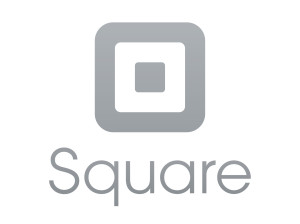 Square credit card processing service was fined $507,000 by Florida’s Office of Finance Regulation for operating an electronic payment processing service without a money transmission license. Some may remember the same treatment in Illinois in March of this year. The order covers two years of operation and processing including Square Register, stored value and prepaid access credit card services.
Square credit card processing service was fined $507,000 by Florida’s Office of Finance Regulation for operating an electronic payment processing service without a money transmission license. Some may remember the same treatment in Illinois in March of this year. The order covers two years of operation and processing including Square Register, stored value and prepaid access credit card services.
Square was granted a money transmission license after it paid the fine via wire transfer and is now in compliance. Square neither admits or denies any wrongdoing. Although it’s an emerging field the Florida based fines show that adhering to state laws is a tricky situation that needs extra scrutiny on the processors end. Due to the state by state nature of the laws, credit card processing companies find themselves complying with each state’s independent regulation laws.
In a statement from Square.. “We worked with Florida to resolve our application and receive our license to operate as a money transmitter in the state, We look forward to continuing to help merchants across Florida grow their business with Square.”
Posted in Credit card Processing, Electronic Payments, Mobile Payments, Mobile Point of Sale Tagged with: account, credit card, Florida, merchant, merchants, Processing, Square

